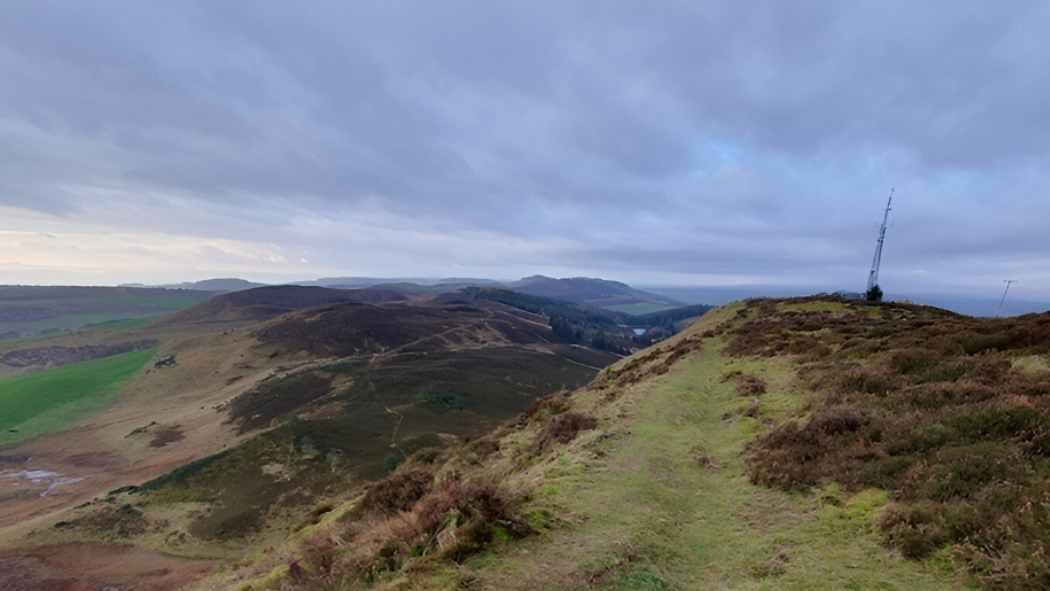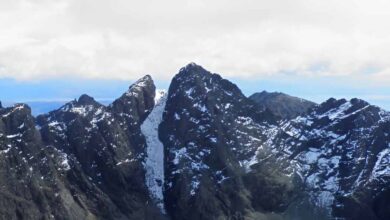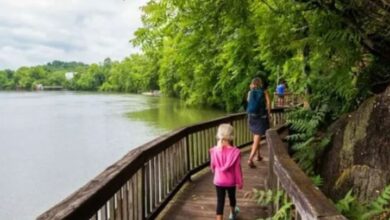Lundie Craigs – A Hidden Scottish Gem of Natural Beauty and Adventure

Nestled within the picturesque Sidlaw Hills of Scotland lies Lundie Craigs, an unspoiled landscape that blends natural charm, tranquil lochs, and breathtaking viewpoints. Though often overshadowed by Scotland’s more famous highlands, Lundie Craigs has quietly become a cherished destination among walkers, photographers, and nature enthusiasts. Its gentle slopes, dramatic escarpments, and expansive vistas offer a perfect mix of serenity and adventure. For anyone seeking an authentic Scottish outdoor experience without the crowds, Lundie Craigs stands as an ideal escape.
The Geographic Setting of Lundie Craigs
Lundie Craigs is part of the Sidlaw Hills range, which stretches across parts of Perthshire and Angus in eastern Scotland. The hills are modest in height compared to the Highlands but possess a unique charm of rolling heather-covered slopes, glistening lochs, and open moorlands. The summit of Lundie Craigs sits at approximately 353 metres above sea level, offering commanding views of Strathmore, the Tay Estuary, and even distant mountain peaks on clear days.
The region’s geography is shaped by ancient glacial activity, which sculpted deep glens and dramatic cliffs. This rugged terrain, softened by grass and bracken, makes it an ideal area for moderate hikes suitable for most levels of fitness. The landscape also serves as a natural habitat for a range of wildlife, including red grouse, roe deer, and various bird species.
The Historical Significance
While Lundie Craigs is primarily known for its scenery, its surroundings also hold layers of Scottish history. The nearby village of Lundie dates back centuries and is home to remnants of old stone buildings, traditional farms, and ancient tracks that once connected rural communities. The name “Lundie” itself is believed to have Pictish origins, possibly referring to a marshy or woodland area.
Over time, this part of Angus became a peaceful agricultural region, but echoes of its past remain in the ruins and boundary walls scattered throughout the hills. The area is also a reminder of Scotland’s long relationship between humans and the land – where farming, forestry, and conservation have coexisted for generations.
The Walking Experience
For walkers and explorers, Lundie Craigs offers one of the most rewarding yet accessible hill circuits in the region. The Lundie Craigs circuit is roughly eight kilometres in length and can be comfortably completed in about two to three hours. The route begins near a small car park off the A923 road and follows a well-defined track that winds through patches of woodland before ascending gently towards the ridge.
As the path climbs higher, the views begin to unfold in every direction. To the south, you can see the Tay Estuary glimmering under the Scottish sun; to the north, the fertile farmlands of Strathmore stretch endlessly. The walk is neither too steep nor overly long, making it ideal for beginners who wish to experience the thrill of a summit without enduring a strenuous climb.
At the top stands a communications mast, marking the highest point. While the structure may appear out of place, the surrounding panorama quickly draws your attention away. On a clear day, you can spot the distant peaks of the Grampian Mountains and even the faint silhouette of Dundee’s urban skyline.
Flora and Fauna
Lundie Craigs is not only a visual treat but also a living ecosystem rich in biodiversity. The hillsides are adorned with heather, gorse, and wild grasses, painting the slopes in shades of purple and green throughout the seasons. In spring and summer, the area bursts with life – wildflowers bloom across the paths, and butterflies flit between patches of clover.
For birdwatchers, the location is a delight. Buzzards often circle overhead, while curlews and lapwings can be heard calling across the open moors. During early mornings, walkers might catch sight of deer grazing near the woodland edges or rabbits darting into burrows. These natural encounters give Lundie Craigs its tranquil and immersive atmosphere, far removed from the bustle of city life.
Photography and Scenic Views
Photographers find Lundie Craigs particularly rewarding due to its ever-changing light and diverse terrain. The combination of lochs, cliffs, and rolling hills creates compositions worthy of postcards. At sunrise, golden light spills over the escarpment, while in the evening, the soft hues of dusk cast a magical glow over Ledcrieff Loch below.
Winter offers its own charm when frost clings to the grass and mist drifts through the valleys. The elevated viewpoint makes it possible to witness dramatic cloud inversions, where low fog fills the glens while the hilltops remain clear under bright skies. Every season brings a different perspective, ensuring that no two visits to Lundie Craigs ever feel the same.
Activities Beyond Walking
Though walking is the main attraction, Lundie Craigs is also popular among mountain bikers and outdoor sports enthusiasts. The area, often grouped with Hallyburton Hill, offers a series of exciting biking trails ranging from gentle forest routes to challenging technical descents. The mixture of woodland and open terrain gives cyclists a thrilling blend of adventure and scenic beauty.
For families, picnicking near Ledcrieff Loch or exploring the smaller woodland paths can be just as enjoyable. Birdwatching, nature sketching, and even wild photography are common activities here. The region’s relative quietness ensures a peaceful day out where the sounds of nature dominate the air.
Accessibility and Tips for Visitors
Reaching Lundie Craigs is straightforward, with good road access via the A923 between Coupar Angus and Birkhill. A small parking area is available near the start of the trail. From there, clear signposts and visible tracks make navigation easy, though carrying a simple map or GPS is always advisable, especially for those attempting the full circular route.
The terrain, while manageable, can become muddy and slippery after rainfall, so sturdy waterproof boots are recommended. Scotland’s weather can change quickly, so layers and waterproof jackets are essential even on seemingly clear days. Walkers should also carry water and snacks, as there are no facilities once on the trail.
The Best Time to Visit
Lundie Craigs can be visited year-round, but each season offers a distinct experience.
-
Spring: Fresh greenery, blooming flowers, and mild weather make it ideal for leisurely hikes.
-
Summer: Long daylight hours and vibrant colours attract more visitors, though early morning or late evening walks are best for tranquillity.
-
Autumn: The landscape turns golden and russet, creating striking photo opportunities and cool, comfortable walking conditions.
-
Winter: For those prepared for chillier conditions, snow-dusted peaks and crisp air add a sense of solitude and magic.
No matter the season, the consistent feature is the sense of calm that envelops every visitor who steps onto the trail.
Environmental Importance and Conservation
As with many parts of rural Scotland, conservation efforts play an important role in maintaining the natural beauty of Lundie Craigs. The balance between recreation and preservation is carefully managed to protect local flora, fauna, and soil. Visitors are encouraged to follow the Scottish Outdoor Access Code – respecting livestock, avoiding litter, and keeping dogs under control near wildlife and farmland.
Forestry work occasionally takes place in parts of the area, which is part of sustainable woodland management. This ensures that the environment remains healthy and continues to provide habitats for native species.
Local Communities and Culture
The communities surrounding Lundie Craigs, including villages like Lundie, Birkhill, and Coupar Angus, reflect the warmth and simplicity of rural Scottish life. Small cottages, local farms, and stone churches dot the region, each telling its own story of heritage and endurance. Visitors often stop at nearby cafés or farm shops to enjoy fresh Scottish produce or a traditional cup of tea after their hike.
The friendliness of locals and the quiet pace of life make the experience more than just a walk; it becomes a window into authentic Scotland.
Why Lundie Craigs Deserves Recognition
Lundie Craigs may not make it to every traveller’s bucket list, but it embodies much of what makes Scotland special – raw beauty, peace, and connection to nature. Unlike crowded tourist spots, it offers a chance to explore freely and breathe deeply in clean air. It appeals equally to solo travellers seeking reflection and families wanting an active day outdoors.
Its manageable size makes it an excellent introduction to Scottish hillwalking, while its diverse scenery provides enough depth to satisfy seasoned explorers. For photographers, writers, and dreamers, Lundie Craigs is a place that inspires creativity and calm.
Conclusion
Lundie Craigs stands as a shining example of Scotland’s understated natural treasures. It may not boast towering peaks or grand castles, but its charm lies in its simplicity – the soft crunch of gravel underfoot, the distant call of birds across the glen, and the expansive views that make you pause in awe.
For those searching for a destination that combines natural beauty, accessibility, and peace, Lundie Craigs is a perfect choice. Whether you walk its trails, capture its landscapes through your lens, or simply sit in quiet reflection at its summit, you leave with a sense of connection to Scotland’s wild heart. In every way, Lundie Craigs reminds us that true beauty often lies in the quieter corners of the world, waiting patiently to be discovered.



